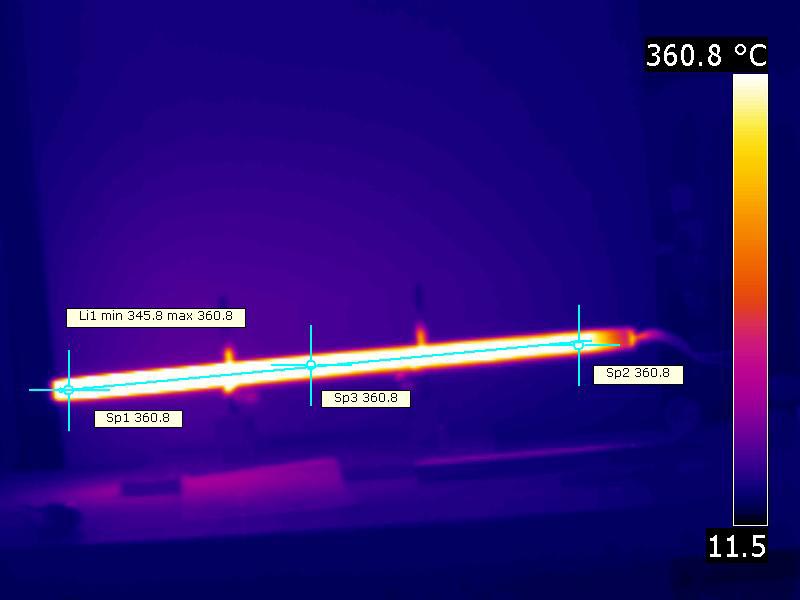| Quality + Study = | { |
Durability Precision Energy saving Lower costs Increased productivity Competitiveness, etc. |
} | x Resistances |

Infrared thermography is a technique that can be used both in the plastics industry for process optimization and quality improvement, as well as in the development of new tooling.
In the thermoplastic injection process, through thermographic images of freshly injected parts still in the mold or just extracted, or on the mold's surface itself, extensive information about the transformation process can be obtained:

Report date:
10/10/2022
Company:
Resistencias
Ind. Maxiwatt
Client:
Address:
Site address:
Thermograph:
Contact person:


Parameters
Comments
| Chamber model: | FLIR T335 |
| Image date: | 10/10/2022 |
| Image name: | IR_138.JPG |
| Emissivity: | 0.16 |
| Reflected temperature: | 20.0ºC |
| Object distance: | 1.0m |
Description
Resistencias Industriales Maxiwatt S.L. Conducts a study with thermal cameras to detect the efficiency of its resistances in the customer's mold or desired application, obtaining spectacular results in thermal precision with compensated resistances.
Thanks to this prior study of the mold or application, we achieve:
Resistencias Industriales Maxiwatt S.L. delivers a detailed written study of the thermographic process carried out by specialized technicians, using the best thermal cameras and advanced software available on the international market.